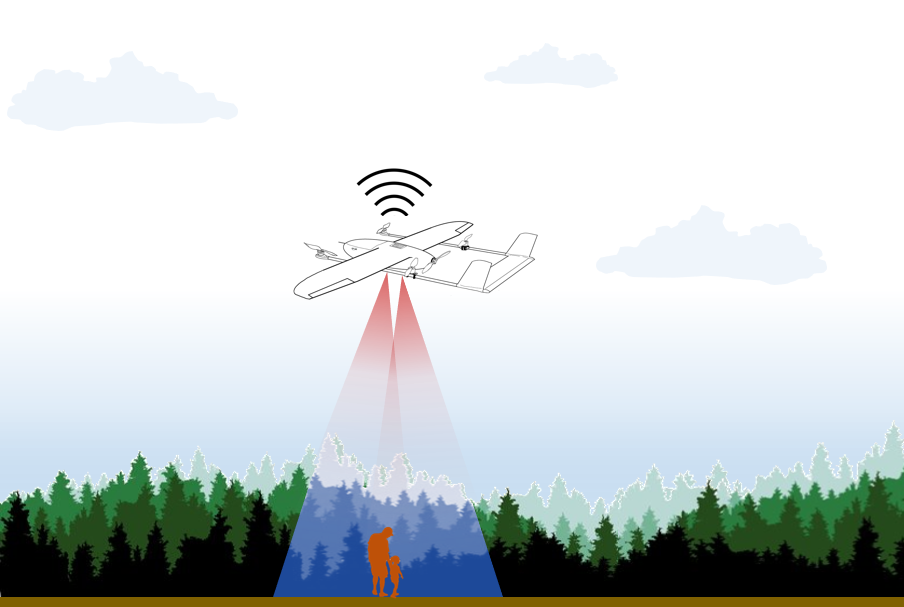
24 May DRONES IN HUMAN DETECTION
Human detection with drones is a rapidly growing technology that is transforming many industries, including search and rescue, law enforcement, and border security. This advanced technology is improving the efficiency and effectiveness of these industries, enabling them to save lives and prevent crime.
Drones, as it is known, can be operated remotely by a pilot on the ground or programmed to fly autonomously using software and GNSS technology. Equipped with cameras and sensors, they are able to capture high-quality images and data from the air so human activity track can be identified on the ground. The cameras used are interchangeable depending on the type of image to be captured; infrared cameras for night-time images, RGB cameras for sharp daytime images or thermal cameras for detecting heat sources such as people lost or trapped under rubble in collapsed buildings. Another essential use is real-time video streaming cameras for greater agility and efficiency in rescue operations, where time is of the essence.
There are several different types of drones used for human detection, each with its own strengths and weaknesses. Fixed-wing drones are designed for long-range flights and can cover large areas quickly, but they require a runway for takeoff and landing. Multirotor drones, such as quadcopters and hexacopters, are more agile and can hover in place, making them ideal for close-range inspections and search and rescue missions.
The implementation of drones for human detection has many advantages over traditional methods of surveillance. Drones can cover large areas quickly and efficiently, providing a bird’s-eye view of the terrain and identifying areas of interest. They can also fly at low altitudes and in tight spaces, allowing them to search for missing persons or suspects in areas that would be difficult or dangerous for human search teams to access. In addition, drones can operate at night and in inclement weather conditions, increasing their effectiveness in challenging environments.
But the applications of them are not limited just to surveillance, they can be used in a variety of industries. In search and rescue operations, drones can be implemented to locate missing persons, monitor disaster areas, and assess the damage caused by natural disasters. Law enforcement agencies can use drones to gather evidence, track suspects, and monitor public events. Border security organizations can use drones to patrol borders and monitor smuggling activities.
Drones can be equipped with AI algorithms that enhance surveillance capabilities, allowing them to accurately identify individuals through computer vision and machine learning techniques. By capturing images or video footage, the drone’s camera provides input for the AI algorithm to swiftly detect and identify humans in the scene. One popular technique, object detection, trains the algorithm to recognize human-associated patterns and features such as body shape and movement, enabling reliable identification even in challenging conditions.
Another important aspect of AI-enabled human detection in drones is real-time analysis. The AI algorithm must be able to analyze the images or video footage captured by the drone in real-time, to provide timely and accurate alerts when humans are detected. This is especially important in applications such as search and rescue or law enforcement, where quick action can make a critical difference.
In conclusion, drones are an innovative technology that is changing the way we approach search and rescue, law enforcement, and border security tasks. The use of drones enables us to access areas that would otherwise be difficult or dangerous to reach, providing a more efficient and effective approach to human detection. With the continued development of drone technology, we can expect to see even more applications of this technology in the future.
